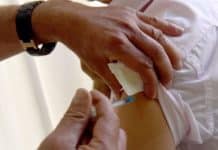EVANSVILLE, Ind., Oct. 29 (UPI) — The U.S. Department of Agriculture on Tuesday unveiled long-awaited regulations for growing and selling hemp as a commodity crop.
The new rule sets standards for how to track hemp acres, test THC levels and dispose of plants with too much of the compound.
“We have had teams operating with all hands on deck to develop a regulatory framework that meets congressional intent while seeking to provide a fair, consistent and science-based process for states, tribes and individual producers who want to participate in this program,” Secretary of Agriculture Sonny Perdue said in a statement.
Industry groups welcomed the news, saying the rules will create consistency across the country.
The rules also give farmers some of the same protections as other commodity crop growers, including access to certain federal crop insurance programs.
They “provide long-awaited clarity, not only for farmers, but also for regulators and service providers like banks and insurance companies, who were hesitant to work with hemp-related businesses without federal guidelines,” Shawn Hauser, the chair of the hemp and cannabinoids practice group at Vicente Sederberg LLP, said in an emailed statement.
“The rules also provide hemp farmers with important safeguards and benefits generally afforded to agricultural program participants, such as protection against state interference of interstate commerce, and eligibility for federal grants and programs,” Hauser said.
After a decades long ban on hemp, the plant became legal to grow and sell with the passage of the 2018 farm bill. The bill allowed states to develop programs to grant farmers licenses to grow hemp.
So far, 47 states have created such programs.
Under the new USDA rules, states still can maintain their programs, but they must align with the federal standards, and the states must submit their plans to the USDA for approval.
Alternatively, a state can choose to legalize hemp, but not enact a program. In that case, the USDA would maintain the hemp program in that state.
It is still illegal to grow hemp in states that have not authorized such production.
“The USDA rule only applies to states and tribes that have authorized hemp within their borders,” Greg Ibach, the USDA under secretary for marketing and regulatory programs, said on a phone call with reporters Tuesday.
Early estimates show that farmers planted some 500,000 acres of hemp in 2019. However, some of those farms struggled to grow the crop, and many ended the season with no where to sell their product.
“The experience producers have this year with harvesting their crop and producing the crop will [determine] whether we see continued growth or whether producers take a step back. That is definitely part of what will influence next year’s crop production,” Ibach said.
“We are at an interesting point with a brand new crop that is offering a lot of hope to a lot of folks. We’ll see how it unfolds.”






